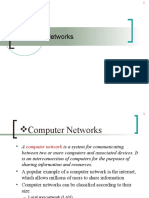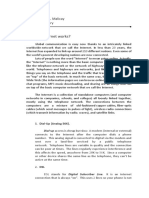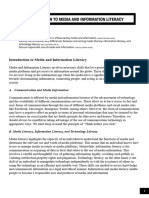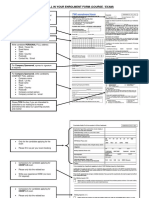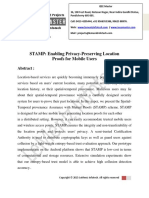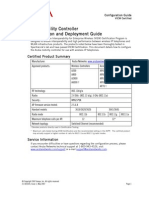0% found this document useful (0 votes)
78 views3 pagesNetworking
Networking allows for the interconnection of processes to share information and resources. The main benefits of networking include simultaneous access to shared data and resources by multiple users, shared peripheral devices to save costs, and personal communication tools. There are different networking structures like LANs for connecting computers near each other, WANs for connecting multiple LANs over long distances, server-based networks with a central server, and client/server networks that distribute processing and storage workload. Network topologies determine the layout of cables and devices, and common topologies include bus, star, tree, ring, mesh, and others. Manufacturing Automation Protocol (MAP) was developed as a standard communication protocol for computer communication in factory environments.
Uploaded by
Fida HussainCopyright
© © All Rights Reserved
We take content rights seriously. If you suspect this is your content, claim it here.
Available Formats
Download as DOC, PDF, TXT or read online on Scribd
0% found this document useful (0 votes)
78 views3 pagesNetworking
Networking allows for the interconnection of processes to share information and resources. The main benefits of networking include simultaneous access to shared data and resources by multiple users, shared peripheral devices to save costs, and personal communication tools. There are different networking structures like LANs for connecting computers near each other, WANs for connecting multiple LANs over long distances, server-based networks with a central server, and client/server networks that distribute processing and storage workload. Network topologies determine the layout of cables and devices, and common topologies include bus, star, tree, ring, mesh, and others. Manufacturing Automation Protocol (MAP) was developed as a standard communication protocol for computer communication in factory environments.
Uploaded by
Fida HussainCopyright
© © All Rights Reserved
We take content rights seriously. If you suspect this is your content, claim it here.
Available Formats
Download as DOC, PDF, TXT or read online on Scribd
/ 3




























